The common bottlenose dolphin is most likely the best known of all cetaceans, figured in legends and being known since the ancient Greeks and Romans. The name comes from its distinctive bottle-shaped beak (called the rostrum) which makes it easily recognisable, together with the smiley mouth-line, the sharp demarcation between the melon and the rostrum, the dark coloration and the moderately falcate dorsal fin.
Bottlenose dolphins can be up to 4 m long and weight 600 kg, but the size can vary a lot between the populations, most likely depending on the water temperature. Nicks and notches on the trailing edge of the dorsal fin, combined with the size and shape, are use to recognised the individuals through the photo-identification.
Some wild bottlenose dolphins have become “friendly” to humans: solitary individuals hanging around harbours and befriending people, interacting with boat, divers and swimmers.
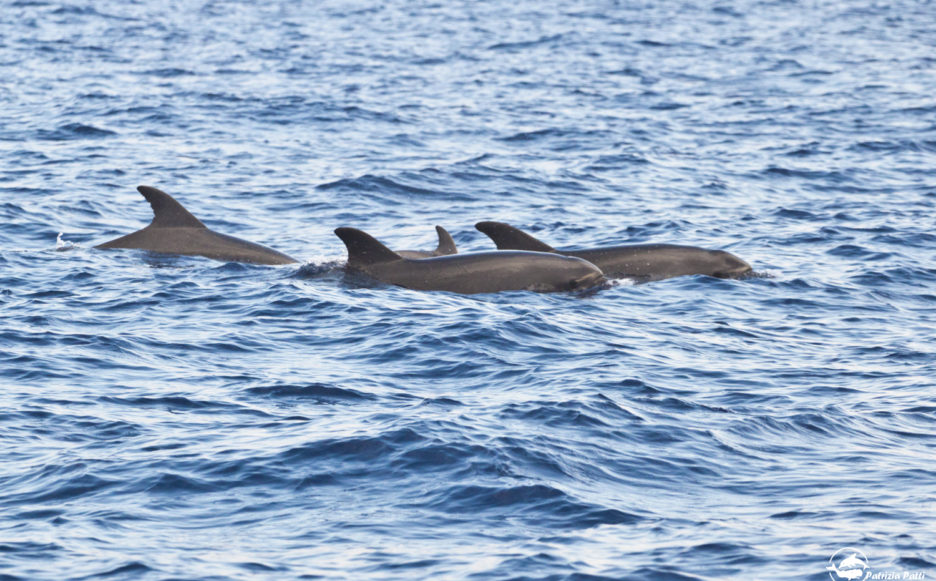
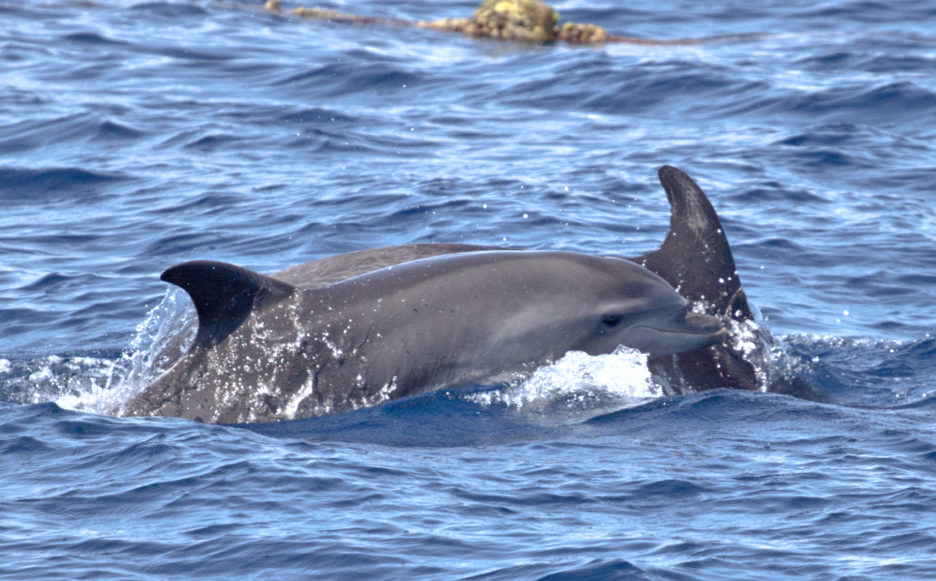
The diet of a bottlenose dolphin is the widest among cetaceans, consisting of fish, squids and crustaceans. An adult dolphin can eat up to 13.5 kg of food every day. Hunting often takes place in groups with several different techniques that depend on the prey and the location.
Depending on the habitat, most bottlenose dolphins regularly dive to depths of 3 to 50 m, but offshore they can dive to several hundreds meters of depth.
Inshore populations show a shorter dive time during feeding, which can be up to 2 minutes, compared to the offshore ones that can dive for an average of 5 minutes, sometimes reaching 13 minutes.
Common bottlenose dolphins are highly social animals and commonly found in groups of 2 to 12 individuals, although pods of hundreds have also been spotted in the open ocean. The groups are generally dynamic and defined by age and sex, where friendships and familiar relationships are very important. In fact, they can form subgroups with different functions, such as nursery groups, mixed sexes groups of juveniles or strongly bonded pairs.
They produce different categories of sounds, including echolocation clicks, burst-pulse sounds and a large variety of whistles. Signature whistles are the fascinating way they use to communicate their identity with each other, serving as their own unique name. Clicks are used instead to detect the prey, to scan the environment and for navigation, while burst-pulse sounds are known to be used in social interaction.
They tend to be active during day and night and are often seen in aerial behaviour, leaping, breaching and surfing, while body contact between the individuals, such as touching and rubbing, maintains strong relationships within the group.
Bottlenose dolphins love to bow-ride and wake ride any type of vessel, from small motorboats to large ships, and often leap out of the water while riding.
Bottlenose dolphins reach sexual maturity at 5 to 13 years for females and 9 to 14 for males and they can live up to 50 years.
Female bottlenose dolphins give birth to a calf every 3 to 6 years after a 12 month gestation period and usually in spring or autumn. Giving birth to a calf requires a considerable investment in terms of energy and nutrition, where males are not involved in the rearing. That’s why females form nursery groups to provide care for offsprings and help the calves survive physically and socially in the marine environment.

The common bottlenose dolphin is most likely the best known of all cetaceans, figured in legends and being known since the ancient Greeks ...
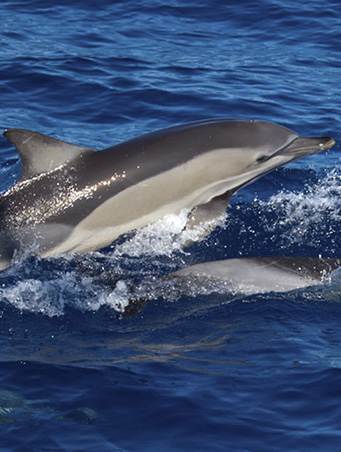
The short-beaked common dolphin is a medium-sized dolphin, easily distinguishable by a very unique hourglass-like pattern on the side of ...
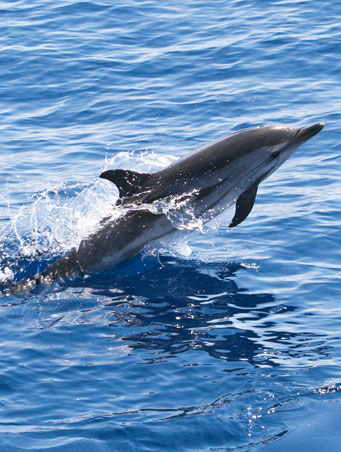
The striped dolphin is the most abundant dolphin species in the Mediterranean Sea. It is a small, active and energetic dolphin, usually s ...
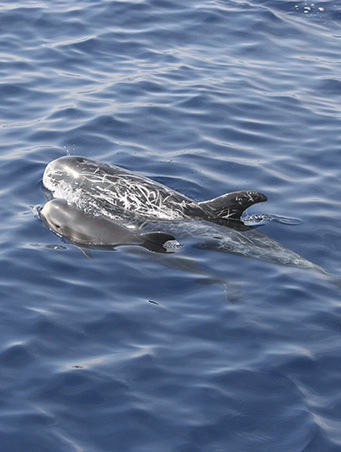
Risso’s dolphins are large members of the Delphinidae family, presenting a distinctive coloration that can vary throughout their ...
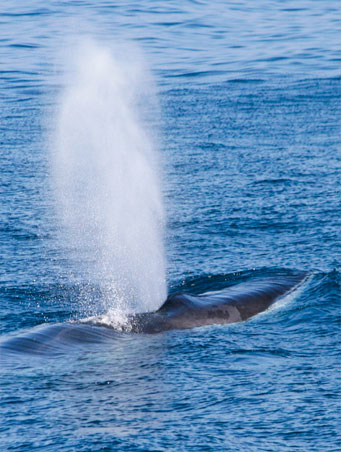
The fin whale is the second longest animal in the world, after the blue whale, reaching a length of 23 m and weighting up to 50 tons. The ...
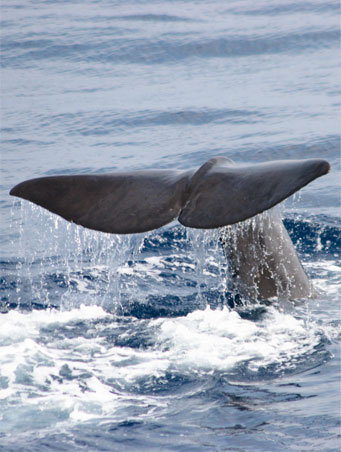
The sperm whale is easily recognisable by its massive heads which contains the spermaceti: the world’s most powerful natural sonar or ech ...